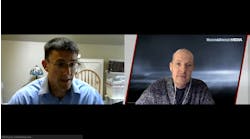The Utah DOT’s plate looks like it belongs to one of those “one-trip-only” buffet lines. Projects and initiatives are starting to dribble off the sides.
In mid-April the Utah State Legislature approved a measure which would create a seven-member commission to place tolls on future roads; a new 33-mile highway is currently in the environmental review phase; and the Legacy Highway, held up by the courts for over three years now, could receive approval by the FHWA by December.
All three plate piles are needed for a population which has developed a fierce appetite for transportation. Portions of southwest Salt Lake County are expected to grow a staggering 500% over the next 30 years, and UDOT recently met with its metropolitan planning organizations and determined that the state is facing $16.5 billion in highway needs over the same time period. The first decade could cost $4.5 billion.
The Mountain View Highway, UDOT’s 33-mile answer to the population explosion in the Salt Lake region, would run the entire length of the western side of the county, with the southern end dipping into neighboring Utah County. The corridor also would connect with I-15, which is 10 miles to the east.
“We have a few alternatives right now and most of them have a highway component to them and they also have a transit component to them,” Tom Hudachko, director of communications for UDOT, told Roads & Bridges. “They’re kicking around bus rapid transit and a streetcar.”
Giving the Mountain View Highway project some extra kick is the fact that it may be the first project tagged by the future toll roads program. Aside from a private investment, the state does not charge for expressway use. Hudachko, however, said UDOT is not ready to rush to any conclusions.
“I think our position is we’re not quite at that point. I think we’re at the point right now where all future corridors are candidates,” he said.
But UDOT is taking a hard look at transportation alternatives. The agency wrapped up a study on managed lanes, where toll roads, HOT lanes, car-pool lanes and reversible lanes were the primary topics.
“The study is not necessarily a decision document,” remarked Hudachko. “It’s more or less to provide guidance as we embark on new projects so the project managers can take a look and see what makes sense.”
UDOT was forced to take a second look at the four-lane Legacy Highway project—which will go from north Salt Lake City to the city of Farmington—when the court ruled for a supplemental environmental impact statement (SEIS) in September 2002. Public comment on the new draft closed two months ago, and UDOT hopes to have a record of decision from the FHWA by the end of 2005 so it can restart development the following spring. In the SEIS, UDOT addressed sequencing and integration of the project with mass transit; the impact on wildlife; highway alignment; and footprint reduction.
The last three years, however, have been costly. According to Hudachko, the original cost of the design-build project was $451 million. Delays have increased the total to $685 million. “The communities that this corridor will provide relief for have continued to grow. Congestion gets worse on a daily basis in northern Utah. I-15 hasn’t reached capacity yet, but it’s getting there,” said Hudachko.

